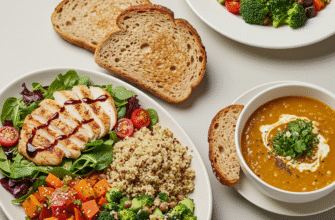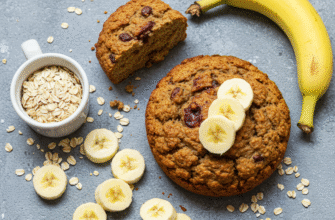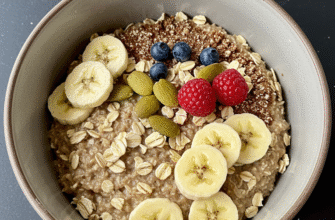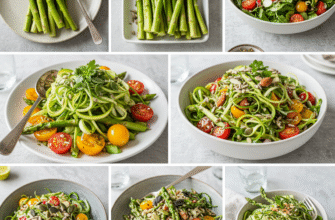Omega-3 fatty acids are a type of fat that gets a lot of attention, and for good reason. They are essential fats, meaning our bodies can’t make them from scratch; we need to get them from the foods we eat. Finding reliable and healthy ways to incorporate these fats into your diet doesn’t have to be complicated. There’s a variety of delicious options available, catering to different tastes and dietary preferences.
Before diving into the specific foods, it’s helpful to know there are three main types of omega-3s we commonly talk about: ALA (alpha-linolenic acid), EPA (eicosapentaenoic acid), and DHA (docosahexaenoic acid). ALA is mostly found in plant foods, while EPA and DHA are predominantly found in marine sources. Our bodies can convert some ALA into EPA and DHA, but the conversion rate can be quite low and varies between individuals. Therefore, getting EPA and DHA directly from food sources is often considered more efficient.
Fantastic Fish Sources for EPA and DHA
When people think of omega-3s, fatty fish often comes to mind first. These marine powerhouses are packed with EPA and DHA, the types readily used by our bodies. Including some of these fish in your weekly meal plan can be a great strategy.
Salmon
Perhaps the most popular poster child for omega-3s, salmon lives up to its reputation. Both wild-caught and farmed salmon contain significant amounts, although wild salmon generally has a slightly different fat profile. Whether grilled, baked, smoked, or pan-seared, salmon is versatile and widely available. Its rich flavour pairs well with countless ingredients, from simple lemon and herbs to more complex glazes and sauces.
Mackerel
Often overlooked, mackerel is a smaller, oily fish that packs a serious omega-3 punch. Atlantic mackerel is generally considered a good choice. It has a stronger flavour than salmon, which some people love. It’s fantastic grilled or smoked and holds up well to robust seasonings. Tinned mackerel is also an accessible and affordable option.
Sardines
Don’t underestimate these little guys! Sardines are not only rich in EPA and DHA but also a great source of calcium (if you eat the soft, edible bones) and vitamin D. They are most commonly found canned, packed in oil, water, or various sauces. They make a quick and nutritious addition to salads, toast, or pasta dishes. Look for sustainably sourced options when possible.
Herring
Similar to sardines but larger, herring is another excellent source of omega-3s. It’s often enjoyed pickled, smoked, or canned. Fresh herring can be grilled or fried. It’s a staple in many Northern European cuisines and offers a distinct, savoury flavour profile.
Anchovies
While often used sparingly due to their intense salty flavour, anchovies are surprisingly concentrated sources of EPA and DHA. A little goes a long way in boosting the umami flavour of sauces, dressings (like Caesar), and pasta dishes. Even adding a small amount contributes to your omega-3 intake.
Fatty fish like salmon, mackerel, herring, and sardines are considered prime sources of the long-chain omega-3 fatty acids, EPA and DHA. These types are directly utilized by the body. Including these fish a couple of times a week is a common dietary recommendation for boosting omega-3 levels through food.
Plant-Powered ALA Sources
For those following vegetarian or vegan diets, or simply looking to diversify their omega-3 intake, plant-based sources primarily offer ALA. While the body’s conversion to EPA and DHA is limited, ALA is still an essential fatty acid with its own importance.
Flaxseeds
Flaxseeds are tiny nutritional giants and one of the richest plant sources of ALA. To get the most benefit, it’s best to consume them ground, as whole seeds can pass through the digestive system intact. Ground flaxseed can be easily added to smoothies, oatmeal, yogurt, or baked goods. Flaxseed oil is another option, often used in salad dressings, but it shouldn’t be heated due to its low smoke point.
Chia Seeds
Like flaxseeds, chia seeds are loaded with ALA, fibre, and protein. These versatile seeds absorb liquid and form a gel-like consistency, making them perfect for puddings, thickening smoothies, or as an egg replacer in baking. They don’t need to be ground to unlock their nutrients, making them incredibly convenient.
Walnuts
Among common nuts, walnuts stand out for their significant ALA content. A handful of walnuts makes a great snack or a crunchy addition to salads, oatmeal, and desserts. Walnut oil can also be used, particularly in cold applications like vinaigrettes, offering a nutty flavour.
Hemp Seeds and Hemp Oil
Hemp seeds, sometimes called hemp hearts (when shelled), provide a good dose of ALA along with protein. They have a mild, nutty taste and can be sprinkled on salads, yogurt, or blended into smoothies. Hemp oil, derived from the seeds, is another ALA source suitable for dressings or drizzling over food, but not for high-heat cooking.
Edamame and Soybeans
Young soybeans, known as edamame, offer a decent amount of ALA, along with fibre and plant-based protein. They can be enjoyed steamed in the pod, shelled in salads, or blended into dips. Other soy products, like tofu, also contain some ALA.
Other Potential Contributors
While the sources above are the heavy hitters, other foods can contribute smaller amounts of omega-3s to your diet.
Seaweed and Algae
Interestingly, fish don’t produce EPA and DHA themselves; they get it from consuming microalgae. Certain types of seaweed and algae are direct sources of EPA and DHA, making algal oil supplements a popular vegan alternative for obtaining these specific long-chain omega-3s. Edible seaweeds like nori and wakame contain some, though amounts vary.
Brussels Sprouts and Other Greens
Some vegetables, like Brussels sprouts, kale, and spinach, contain small amounts of ALA. While not nearly as concentrated as seeds or fish, regular consumption of diverse vegetables contributes to overall nutrient intake, including trace amounts of omega-3s.
Canola Oil (Rapeseed Oil)
While highly processed oils are often debated, canola oil does contain a reasonable amount of ALA compared to many other common cooking oils. However, its overall fatty acid profile and processing methods mean it might not be the first choice for everyone seeking health-conscious options.
When choosing omega-3 sources, consider variety. Relying on just one source might limit the range of nutrients you consume. Combining different types, like having fatty fish some days and incorporating ALA-rich seeds and nuts on others, provides a broader spectrum of fats and other beneficial compounds found in these whole foods.
Incorporating Omega-3s into Your Meals
Getting enough omega-3s is less about complex recipes and more about consistent inclusion. Start small: sprinkle ground flax or chia seeds on your morning cereal, choose salmon for dinner once a week, snack on a handful of walnuts, or add edamame to your stir-fry. Even simple swaps, like using an ALA-rich oil in your salad dressing, can make a difference over time. Remember that cooking methods matter too; baking, grilling, or steaming fish is generally preferred over deep-frying, which can add unhealthy fats and potentially damage the delicate omega-3s.
Exploring the diverse world of omega-3-rich foods can be a delicious journey. From the rich flavour of fatty fish to the nutty crunch of seeds and walnuts, there are plenty of ways to ensure you’re getting these important fats directly from your diet. Focusing on whole food sources brings the added benefit of fibre, vitamins, and minerals packaged alongside the omega-3s.








